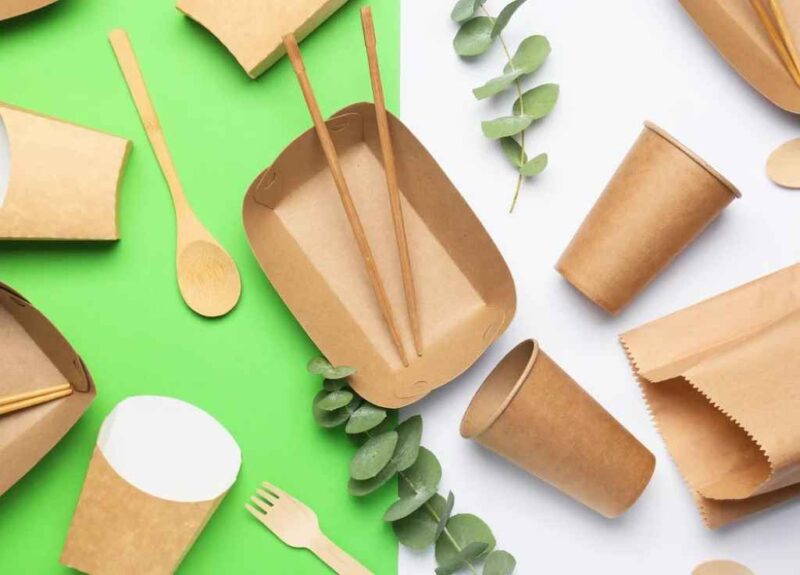Sustainable packaging has evolved from a niche concern to a mainstream priority for modern retailers. Consumers are increasingly demanding eco-friendly options, and regulatory pressures are mounting. This shift presents both challenges and opportunities for businesses aiming to reduce their environmental footprint.
Why Sustainable Packaging Matters
- Consumer Demand: A growing number of shoppers base their purchasing decisions on a company’s sustainability practices. Offering eco-friendly packaging can be a powerful differentiator.
- Regulatory Landscape: Governments worldwide are enacting stricter regulations on packaging materials, especially plastics. Staying ahead of the curve is crucial for compliance.
- Brand Reputation: Sustainable packaging aligns with a positive brand image, showcasing corporate responsibility and attracting environmentally conscious customers.
- Cost Savings: In the long run, sustainable packaging can lead to reduced material costs, lower waste disposal fees, and potential tax incentives. Incorporating sustainable packaging into corporate strategy can also enhance brand reputation and customer loyalty.
Key Trends in Sustainable Packaging
- Recycled and Recyclable Materials:
- Paper and Cardboard: These remain staples for their recyclability. Innovations include using recycled content and optimizing designs for easier recycling.
- Bioplastics: Derived from renewable resources like cornstarch or sugarcane, bioplastics offer a lower carbon footprint and can be compostable under the right conditions.
- Aluminum and Glass: These materials are infinitely recyclable and retain their quality throughout multiple recycling cycles.
- Reusable Packaging Systems:
- Refill Models: Brands are experimenting with refill stations or returnable containers for products like cleaning supplies, cosmetics, and even food.
- Take-Back Programs: Retailers are incentivizing customers to return packaging for proper recycling or reuse.
- Deposit Schemes: Charging a deposit on packaging and refunding it upon return encourages responsible disposal.
- Minimalist Packaging Designs:
- Reduced Material Usage: By eliminating unnecessary layers, optimizing shapes, and using lightweight materials, brands can significantly reduce packaging waste.
- Rightsizing: Tailoring package sizes to the product prevents excess material usage and reduces shipping costs.
- Concentrated Products: Offering products in concentrated form reduces the need for large containers.
- Innovative Materials and Technologies:
- Edible Packaging: Startups are developing edible films and coatings made from seaweed, potato starch, or other natural materials.
- Mushroom-Based Packaging: Mycelium, the root structure of mushrooms, can be grown into custom shapes to replace styrofoam.
- Plant-Based Packaging: Materials like sugarcane bagasse and bamboo offer renewable alternatives to traditional plastics.
- Smart Packaging:
- QR Codes and NFC Tags: These allow consumers to access product information, track the origin of ingredients, and learn about recycling options.
- Time-Temperature Indicators (TTIs): TTIs monitor the freshness of perishable goods, reducing food waste.
- Active Packaging: This uses technology to extend shelf life, absorb moisture, or release preservatives.
Solutions for Modern Retailers
- Conduct a Packaging Audit: Assess your current packaging to identify areas for improvement.
- Set Clear Sustainability Goals: Establish measurable targets for reducing packaging waste and increasing the use of recycled content.
- Collaborate with Suppliers: Work with packaging manufacturers to explore eco-friendly options and innovations.
- Educate Consumers: Provide clear instructions on how to recycle or reuse packaging. Use labels and in-store signage to raise awareness.
- Embrace Circular Economy Principles: Design packaging with its end-of-life in mind. Consider reusable, refillable, or compostable options.
Beyond the Trends: A Holistic Approach
Sustainable packaging is not just about swapping materials. It involves a comprehensive approach that considers the entire product lifecycle, from sourcing raw materials to disposal. This includes:
- Optimizing Logistics: Efficient transportation and warehousing can minimize emissions and reduce the need for protective packaging.
- Supporting Sustainable Forestry: Source paper and cardboard from responsibly managed forests.
- Engaging in Extended Producer Responsibility (EPR): Take financial and logistical responsibility for the collection and recycling of your packaging.
In conclusion, the sustainable packaging landscape is evolving rapidly. By staying informed about the latest trends and solutions, modern retailers can make informed decisions that benefit their businesses, the environment, and their customers. Remember, sustainability is a journey, not a destination. It requires continuous innovation, collaboration, and a commitment to making a positive impact.


